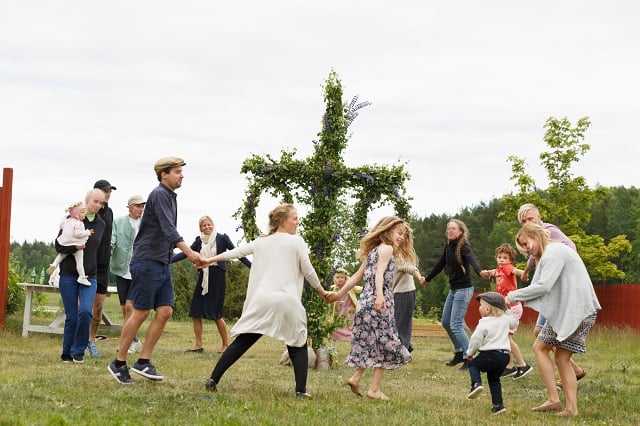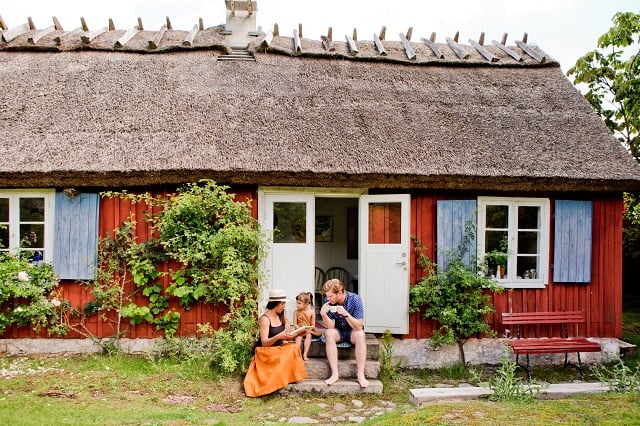This article is available to Members of The Local. Read more Membership Exclusives here.
If you're working in Sweden, you're already one of the luckiest employees on the planet when it comes to annual leave, even before factoring public holidays into the equation.
By law, firms have to give full-time staff 25 days off, and many offer extra days and benefits on top of this. For example, most employees have the right to take at least four consecutive weeks off in June-August if they choose, and you'll find that Sweden's larger cities empty out in those months.
But on top of those paid vacation days, there are several so-called 'red days' (röda dagar) in the Nordic nation. Plenty of workers schedule their breaks away around these public holidays and by doing so you can get long stretches of time off by only using a few of your precious vacation days. Keep reading to learn the tricks to make the most of this, and the other factors to be aware of.
READ ALSO: Everything you need to know about annual leave in Sweden
1. Check your company's approach to annual leave around public holidays
Some firms offer de facto bonus half days ahead of public breaks, while others ask staff to take annual leave in the days before or afterwards, in order to synchronize company work schedules.
The dates in between public holidays are known as klämdagar which means 'squeezed days', for example a Monday which falls between a weekend and a public holiday the next Tuesday. Some employers offer these as extra vacation days, and for those that don't, they are popular days to take off, meaning some businesses offer a 'first-come-first-served' policy for these sought-after days.
That means planning ahead if you want to take time off then, but consider whether you might actually want a few quiet days in the office while your boss stays at their summer house after a national holiday, perhaps saving your own annual leave for dark November or frozen February.
If you do shift work or are a member of a union, you're likely to get extra pay for working public holidays. If red days take place over a weekend, some firms – but far from all – offer an alternative weekday off instead.
If you're not sure what your company's policy is, don't be afraid of discussing holidays with your employer. Sweden's approach to work-life balance means they are more likely to think less of you if you don't plan any time off.

Photo: Christian Ferm/Folio/imagebank.sweden.se
2. Book early if you want to travel during 'red day' periods
Swedes love to plan, so if you're thinking about travelling around Sweden over Midsummer or enjoying an Easter getaway, now is the time to start organizing. Hotels, flights and even trains and popular restaurants can get booked up months in advance, with prices rising as the holidays get closer. If you have family abroad, it could be more expensive to return home to visit them, or for them to visit you.
3. Beware of restaurant and attraction closures
In many countries public holidays can often be a chance for tourist attractions to cash in on extra visitors, but Swedes often consider their time off to be sacred.
If a particular museum, restaurant or attraction is a major appeal of a destination, check in advance that it will actually be open to avoid disappointment on the day.

Photo: Lina Roos/imagebank.sweden.se
4. Be prepared for your Swedish friends to leave town
Public holidays are a classic time for Swedes to leave the country's big cities and head to their parents' places or second homes in the countryside, so they can be a lonely time for foreign workers. Start dropping hints early if you're hoping for an invitation to a Swedish summer house this Midsummer, or check online social forums to connect with other internationals who are in the same boat.
5. Check school term dates
It's obvious that if you've got school-age children, you'll need to know when their term starts and finishes — be aware that these dates differ in different parts of the country. But even for workers without children, it pays to check when the summer holiday is, as well as the spring break (sportslov) and autumn break (höstlov or läslov).
Traffic is often very busy at the start and end of these periods as families escape from the cities, and hotel prices can also rise due to the spike in demand. In particular, if you want a winter skiing break, you're likely to save money (and have a more peaceful holiday) by avoiding the time in February when ski resorts are packed with families enjoying the winter sports break. You'll find a comprehensive list of the dates on the SkolPorten website.
Keep reading below for a list of Sweden's public holidays in 2019.
![]()
Photo: Per Pixel Petersson/imagebank.sweden.se
National public holidays in Sweden in 2019
January
Tuesday January 1st – New Year's Day – Public holiday
It's a good start to the year, because New Year's Day falls on a Tuesday, and many employers offer December 31st as a day off making this a four-day weekend. Unfortunately that means Epiphany, January 6th, falls on a Sunday, so 9-5 workers miss out on that extra red day.
April
Friday April 19th – Good Friday – Public holiday
Monday April 22nd – Easter Monday – Public holiday
It's a long wait until the next set of public holidays, but 2019's late Easter means there's a better chance the weather will have improved if you want to use the long weekend to explore Sweden.
May
Wednesday May 1st – Public holiday
Thursday May 30th – Ascension Day – Public holiday
Walpurgis Eve on April 30th is often a de facto half-day (but check with your employer first). In 2018 it falls on a Tuesday, so by asking for the 29th off plus a full or half-day on the 30th depending on your company's policy, you can get a five-day stretch off work.
There's another chance at a long weekend later in May if you get the Friday after Ascension Day off. But it's a popular klämdag, so make sure you get there before your colleagues.
June
Thursday June 6th – National Day – Public holiday
Friday June 21st – Midsummer's Eve. This isn't technically a public holiday, but because the day is such an integral part of Swedish summer traditions, most employers will give you the day off anyway. If they do, there's a chance they'll also treat you to a half-day off on the Thursday.
And if you take the Friday after National Day off, that's two long weekends in one month.
November
Friday November 1st – All Saints' Eve. Not a public holiday, but because it falls the day before All Saints' Day, which is a public holiday, there's a chance you'll get half the day off. But ask your employer first.
December
Tuesday December 24th – Christmas Eve
Wednesday December 25th – Christmas Day – Public holiday
Thursday December 26th – Boxing Day – Public holiday
Tuesday December 31st – New Year's Eve
Wednesday January 1st, 2020 – New Year's Day – Public holiday
Just like Midsummer's Eve, Christmas Eve and New Year's Eve are not technically public holidays, but they are almost always treated as such anyway.
This year the Christmas holidays are positioned so that all fall on weekdays. This means that if you also take off the 23rd, 27th, and 30th (or if your employer offers any or all of these as klämdagar), you'll get 12 consecutive days of holiday. Take off the 2nd and 3rd as well and you'll get a 17-day stretch for the price of only five days' annual leave. Perfect if you want to travel overseas to visit family or enjoy some winter sun.



 Please whitelist us to continue reading.
Please whitelist us to continue reading.
It’s Wednesday, January 1st 2020 (Not 2019)…